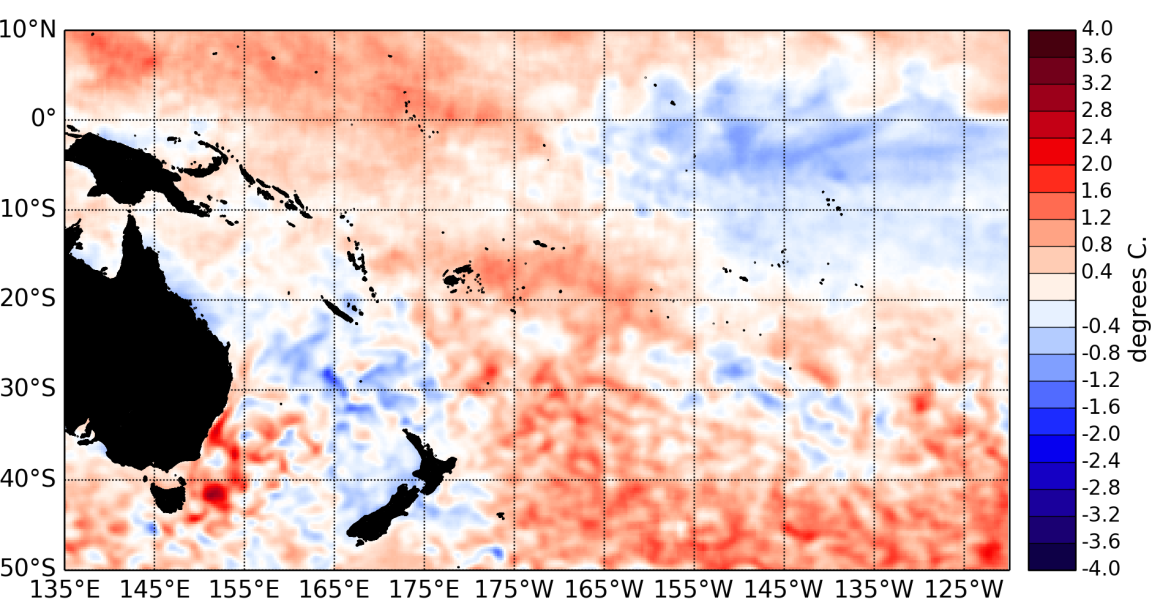The tropical Pacific Ocean remained in a neutral state (neither El Niño nor La Niña) in March 2014. However several indicators ventured over or close to El Niño thresholds in the last days of the month.
The central and eastern Pacific cool anomalies have weakened in March compared to February, and warmer than normal sea surface temperatures (SSTs) have emerged off the South American coast along the Equator. The NINO3.4 index value for March is –0.05°C, but the lastest weekly value (to 30 April) is now positive (0.27°C). The NINO3 index values are respectively 0.02°C and 0.44°C for March as a whole and the last week of the month.
Subsurface waters remain much warmer (up to +5°C) than normal in the central Pacific at about 150m, and warm subsurface anomalies have appeared in eastern Pacific at around 50m depth. The Pacific Ocean is currently storing a large amount of anomalous heat.
Convection and rainfall was suppressed in the western part of the Intertropical Convergence Zone (ITCZ).
The South Pacific Convergence Zone was intensified and shifted northeast of normal.
The latest value for the TRMM ENSO index for the 30 days to 3 April is 0.46.
The Southern Oscillation Index (SOI) is negative at –1.7 for March 2014, following a dramatic drop in the index over the course of the month.
The Madden – Julian Oscillation (MJO) has been mostly inactive in the last two weeks, and the forecasts indicate reduced intra-seasonal convective activity associated with the MJO over the next two weeks.
The consensus forecast from IRI / CPC indicates that neutral ENSO conditions are likely to persist over the April – June 2014 period, with 78 % chance, versus 5 % for La Niña and 17 % for El Niño. Probabilities of El Niño increase over the following seasons to reach ~ 50% in June – August 2014.

